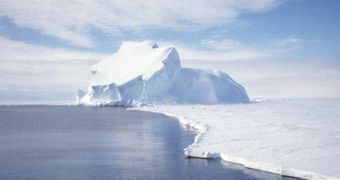The Antarctic Geological Drilling project, also known as Andrill, is one of the most ambitious projects on the Southern Continent to date, seeking to unravel the mystery of how the place looked like millions of years ago. The final goal of the research is to determine whether the melting we are experiencing at this point is the result of a vast geological process Antarctica undergoes cyclically, or simply the outcome of too much human activity. Or maybe it's a combination of the two, no one can say for sure yet.
Geologists who have studied the continent in the past know that the ice sheets started appearing on top of it some 35 million years ago, when the climate suddenly shifted. One of the main questions Andrill is trying to answer is if, after its formation, the ice melted and then re-formed several times over, or whether it has remained in place ever since. In order to find answers, a drill works day and night, digging up a hole into Antarctica's past.
It peers some 19 millions years into the past, while researchers just a few miles away, at the US McMurdo Station, continuously analyze the samples.
Thus far, the effort has managed to conclude that ice in the Antarctic Peninsula has melted and recovered more than 60 times in the past millions of years, a find supported by the oxygen-16 isotope readings. These isotopes offer a clear image of the transformations the South Pole has periodically undergone, and may provide the researchers with what they need to construct a computer model that could predict how things will evolve over the next centuries.
“There seems to be a lot more variability in the ice sheet than anyone pictured. That's what's so exciting about this. But it's also kind of scary,” University of Massachusetts Amherst Glaciologist Robert DeConto said.
By studying the rock samples and cross-referencing the results with others obtained by geological surveys all around the world, the team has been able to conclude that the changes affecting the Antarctic have had global implications, as far as sea levels go. When comparing the climate conditions present on Earth during the Pliocene time period, the experts have found that carbon concentrations played a significant role in the amount of ice found in Antarctica at the time.
“We know that CO2 was around 400 or 450 parts per million in the atmosphere, and there was no ice sheet on West Antarctica. That's where we're almost at now. So it's a really important window into what we'll be facing in the next 100 years,” Andrill's Scientific Director, New Zealand-based Victoria University of Wellington researcher Timothy Naish, concluded, as quoted by NewScientist.

 14 DAY TRIAL //
14 DAY TRIAL //